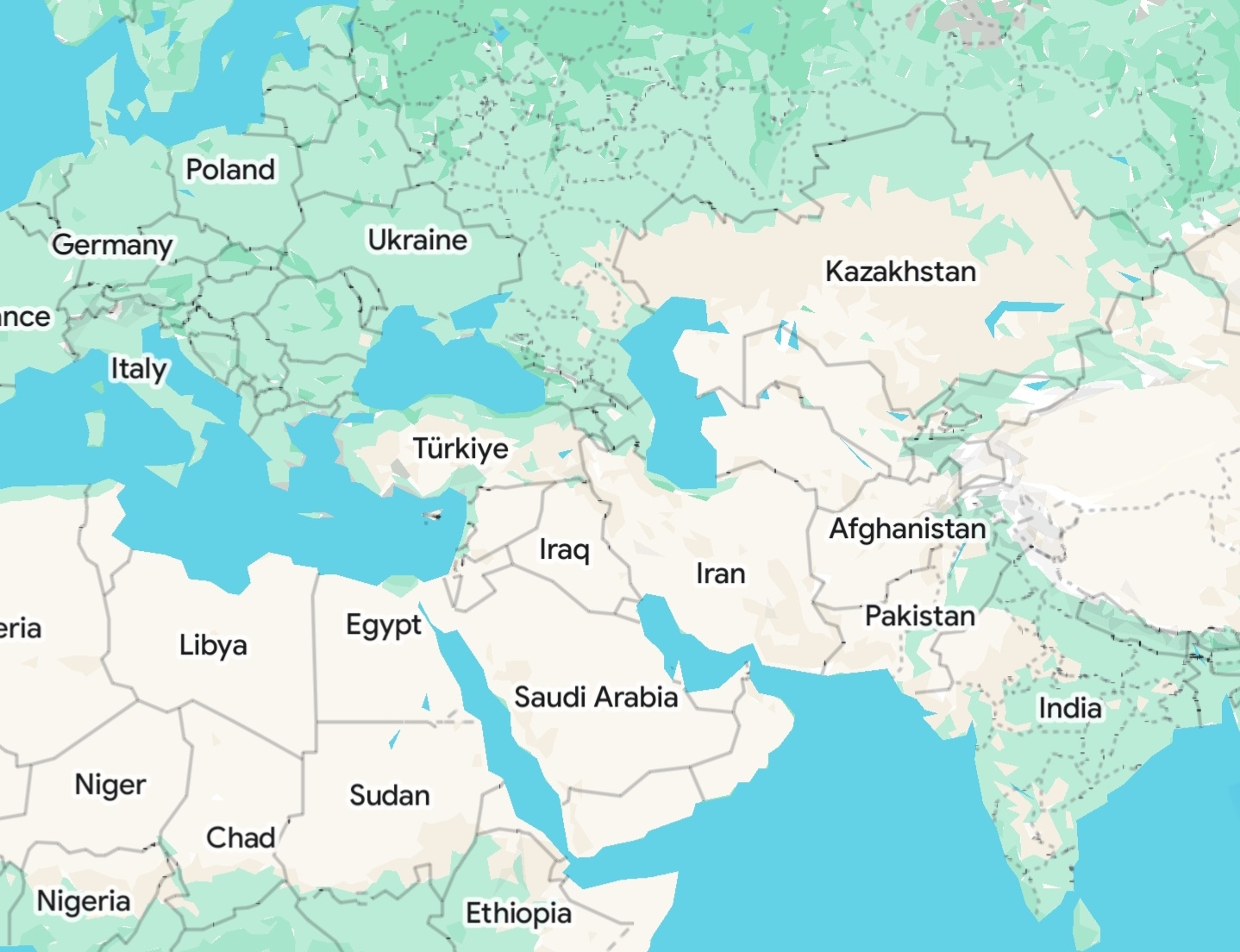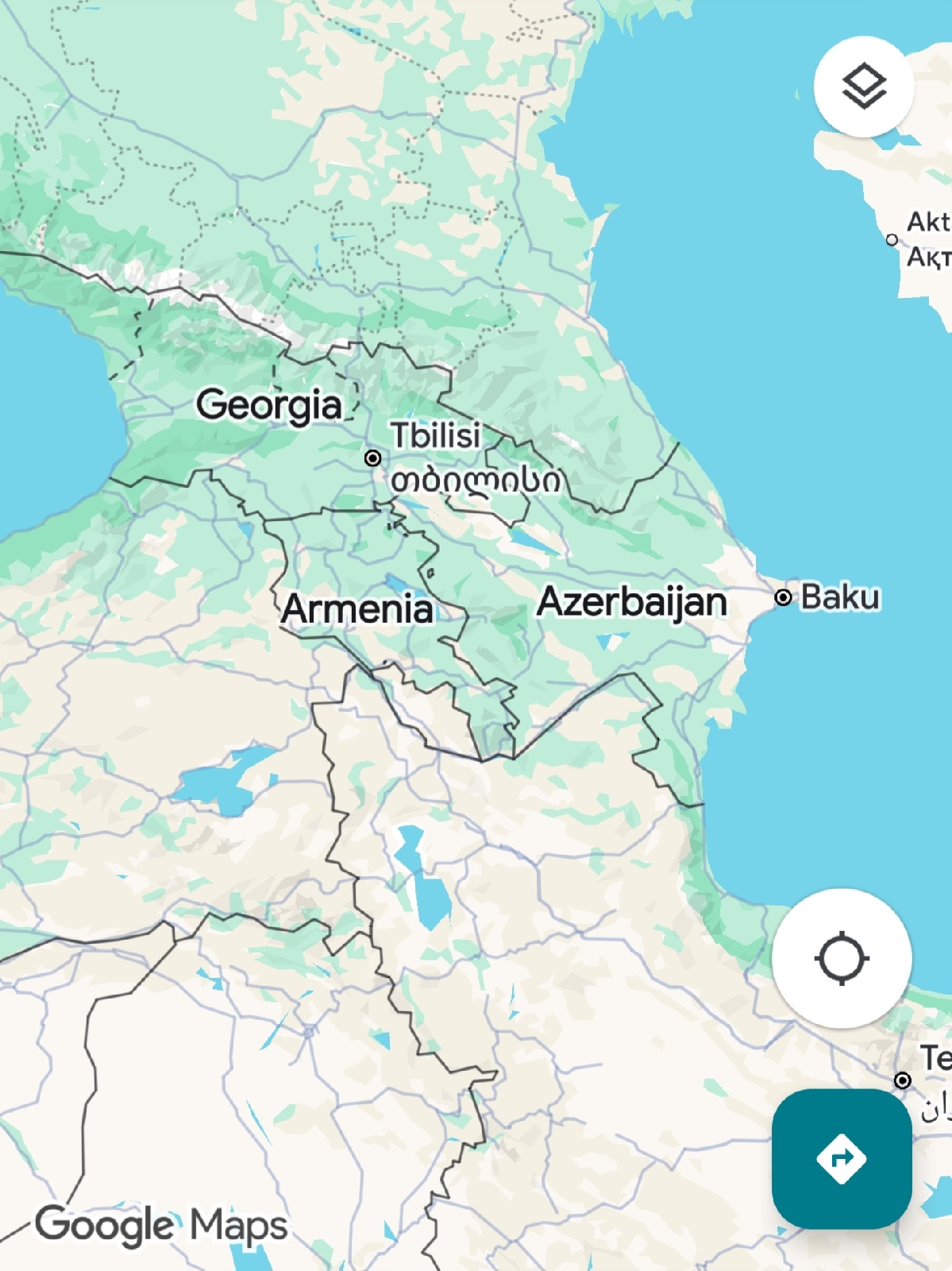Azerbaijan crime ring, offset 1h20m
1. The Caucasus as "Shatterbelt"
Like the Balkans and the Levant, the Caucasus is what geopolitical theorists call a shatterbelt: a region caught between rival powers, fragmented by history, and prone to chronic instability.
This is a very mountainous zone, sandwiched between the Black and Caspian Seas. Its rugged topography of mountains, valleys, and rivers sharpens ethnic divisions, but its geography also makes it a natural transit corridor between Europe, Russia, Central Asia, and the Middle East.
2. A Region of Empires and Faultlines
For centuries, the Caucasus was contested by Turkey, Russia, and Persia. Even under Soviet control, Moscow never fully subdued the region, which includes volatile territories such as Chechnya.
The region’s diversity is staggering: dozens of peoples, languages, and faiths - Orthodox Christians, Shia and Sunni Muslims, Jews, Yazidis - all shaped by bitter memories of past imperialism, genocide, and forced migration. These faultlines are political as much as they are ethnic.
3. Shatterbelts on the Edge of Empire
Looking at a map, the Balkans, Levant, and Caucasus all lie along the tectonic political plates of Europe and Asia. When outside powers weaken or start backing different local actors, the communities of the Caucasus often default back to historic conflicts.
In particular, if Russia fails to secure its southeastern flank, it faces potential threats from Iran, or from jihadist flows and instability across the Middle East.
4. The Energy Corridor and Russia’s Strategic Dilemma
Of more immediate importance: two critical oil and gas pipelines traverse the South Caucasus, connecting Caspian Sea energy reserves to Western markets, and bypassing Russian and Iranian territory. This corridor is now of vital importance to Europe, given the steep drop in Russian energy imports as a result of the proxy war in Ukraine.
For Russia, the stakes are double-edged. It opposes these pipelines yet also has a growing interest in maintaining good relations with Iran - Iran is the only country that offers Moscow a realistic land-and-sea route to the Persian Gulf and Arabian Sea, bypassing Western-controlled chokepoints.
5. Conclusion: The New Great Game
What we are witnessing is the continuation of the Great Game that was once fought out between Imperial Britain, jealous particularly of the route to India, and Tsarist Russia, now being played out between NATO, Russia, Iran, and also rising Asian powers.
The Caucasus remains what it has always been: a "buffer, a battleground, and a bottleneck", as one writer, put it. Whether this region settles into fragile peace or erupts once again into conflict will depend not only on local actors, but on the shifting ambitions and fears of the great powers that surround it.
Glossary of Terms
1. Shatterbelt
A region caught between major powers, prone to fragmentation and conflict.
The Caucasus, like the Balkans and the Levant, lies between empires and civilisations. These regions often experience repeated foreign intervention, ethnic division, and wars—especially when global power balances shift.
2. The Great Game
A 19th-century term for the strategic rivalry between the British and Russian Empires in Central Asia.
The “new” Great Game refers to today’s geopolitical contest over the Caucasus, Central Asia, and energy routes, now involving Russia, NATO, Iran, China, and others.
3. Energy Corridor
A route that transports oil and gas from resource-rich regions to international markets.
The South Caucasus hosts pipelines that carry Caspian energy westward to Europe, bypassing Russian and Iranian territory. This makes the region vital to energy security.
4. Caspian Sea
The world’s largest inland body of water, bordered by Russia, Iran, Kazakhstan, Turkmenistan, and Azerbaijan.
Rich in oil and gas reserves, it is a focal point of competition between powers that seek control of its energy exports
5. Strait of Hormuz
A narrow sea passage between the Persian Gulf and the Arabian Sea.
Roughly 30% of the world’s seaborne oil passes through it, largely to Europe. Although not in the Caucasus, Russia’s interest in accessing this strait via Iran underlines its strategic ambitions.
6. Buffer Zone
A region situated between two rival powers, often unstable but important for security.
The Caucasus acts as a buffer between Russia and the Middle East, and between Western and Eastern spheres of influence.
7. Ethno-religious Fragmentation
The coexistence of multiple ethnic and religious groups in a single region, often without a shared national identity.
This defines much of the Caucasus, home to Armenians, Azerbaijanis, Georgians, Chechens, Ossetians, Lezgins, and more.
8. Proxy War
A conflict where external powers support different local sides rather than fight directly.
The Ukraine war is the most visible example today, but the Caucasus has also seen foreign-backed factions play out wider rivalries.
9. Hierarchy
This is about order and chaos. The word "hierarchy" comes from the Greek "hierarkhia," meaning "rule of a high priest," which combines "hieros" (holy) and "archos" (ruler). Ipposite: anarchy - from Greek anarkhia "lack of a leader, the state of people without a government".
[End]










0 comments:
Post a Comment
Keep it clean, keep it lean